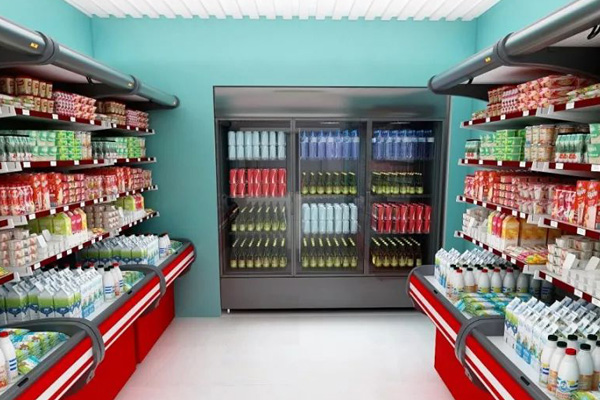Supermarket shelf layout design skills
Sep 27 , 2024
The selection of shelves in each area of the supermarket will be divided into multiple areas based on the diversity of goods sold, such as the wine area, fresh food area, food area and daily chemical area. The use of supermarket shelves also varies from region to region.
For more expensive things like high-end red wine, high-end white wine, etc., you need to use beautiful display cabinets for display. Otherwise, if they are placed directly on ordinary shelves, not only will they not reflect the high-end quality of the goods, but they will also be easily damaged by collisions.
The fresh food section is filled with items such as fruits and vegetables, which should be displayed in special fruit and vegetable racks or fruit and vegetable baskets. The purpose of this is first of all to be aesthetically pleasing and to make the product look more original. The second is that some fruits and vegetables need to be sprayed with water to stay fresh, and if they are placed directly on ordinary shelves, the shelf life will be shortened.
The food area and daily necessities area only need to use the most common shelves for display, such as double-sided supermarket shelves, wall-mounted supermarket shelves, etc. Due to the nature of the goods sold in these two areas, it is enough as long as the load-bearing and safety of the shelves and a certain degree of aesthetics can be guaranteed.

1. Daily necessities as consumables. If the household is a unit that usually has to buy it once a month, placing these items at the entrance will remind customers to buy daily necessities, and they will often put them in their shopping carts, thus driving sales of the product.
Therefore, many daily necessities are placed for the convenience of customers, so rolling rack shelf beer can be used to make them quick to take and easy to replenish.
2. The exit of the supermarket is usually the cashier area. By placing small, inexpensive items in the checkout area, customers are more likely to make impulse purchases. For example, a customer doesn't want to buy chewing gum, but when they see it in the checkout area and it's not expensive, they might choose one. However, if you place some large items in this area, it will have no effect.
The shopping aisles in supermarkets are generally wide and straight. This is to extend the "stay" time of consumers in the supermarket as much as possible and prevent them from taking shortcuts to the checkout counter and exit. Supermarkets will also take advantage of people's habit of shopping with their right hand and place the products they want to sell most and have higher profits on the right side of the main shopping aisle or display cabinet. When customers pass by, they will be aroused by some unnecessary products and want to buy. This increases the purchase rate of the product.
